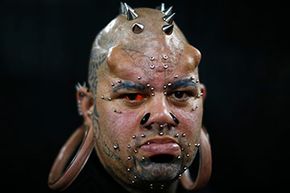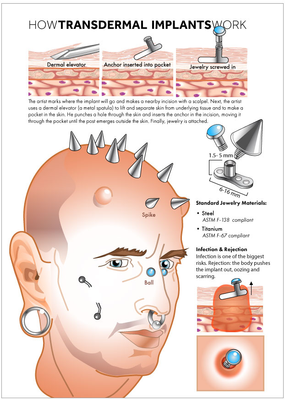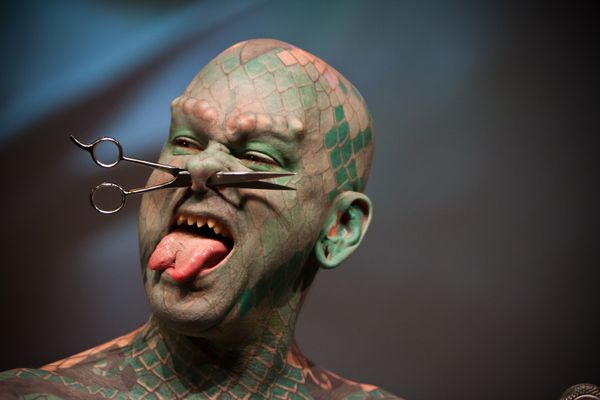When a guy walked out of house in Phoenix in 1996 with metal spikes protruding from his head, it was the start of something big. Not tattoos-and-tongue-rings big -- as far as "body modifications" go, those are downright mainstream. But big as in a giant leap for extreme body modification: That "metal mohawk" was, as far as we know, the first transdermal implant, and it laid the groundwork for all other implant designs that followed [sources: BMEzine Encyclopedia, Philips].
Almost anything we add to or change about our bodies for appearance' sake is a body modification, technically speaking [source: Bradley University]. Most are about getting closer to a cultural ideal of beauty, like nose jobs, breast implants or foot binding. Others are simple adornments, like pierced ears. They're often pretty by cultural norms. We hardly notice them.
Advertisement
Extreme body mods are something different, partly because they're about straying from widespread appeal, not moving toward it. They may have some element of ritual associated with them [source: Bradley University]. In Western cultures, modifications like transdermal implants, genital piercing, branding and ear stretching are all considered extreme. They're relatively rare, and they may provoke negative reactions among the general public [source: Sprague].
Yet many of these extreme modifications have long histories outside the West. Ear stretching, or the gradual enlargement of an ear-lobe piercing around progressively larger discs, dates back millennia to Egypt, China and Mayan and African cultures [source: DeMello]. Branding has its roots in the ancient rituals of tribes like the Australian Aborigines and the Karos of Ethiopia [source: Guynup]. Penis piercing is described in the Kama Sutra, ancient Hindu's guide to sensuality [source: Siderius].
And then there are transdermal implants, which appear to date all the way back to 1996, when Phoenix-based "body artist" Steve Haworth attached metal spikes to Joe Aylward's head [source: BMEzine Encyclopedia].
A transdermal implant is an object inserted under the skin and made to cross the dermal barrier. Transdermals can be problematic, to say the least: The healing rate is abysmal, and the procedure required to get them in is at least somewhat illegal [source: Stokes]. It's primarily an underground practice, and detailed information from traditional sources is somewhat sparse [source: AP]. But information offered in body-mod wikis and forums paint a picture of a practice that's controversial even among the extreme.
Advertisement




